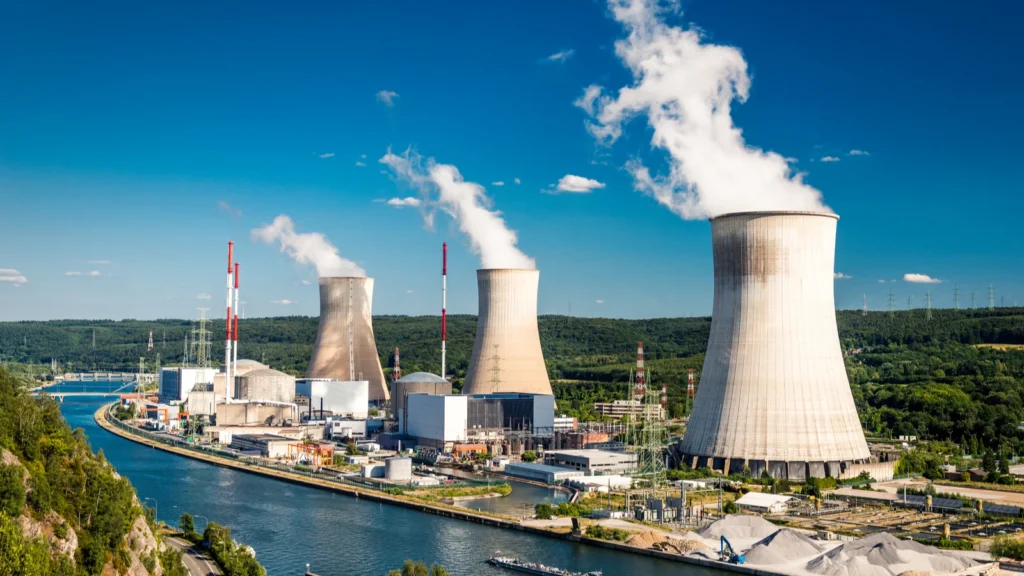Energy
- by:
- Nick H
Key Points
The energy sector covers oil, gas, renewables, and utilities, powering every aspect of modern life.
Investors can access the sector through stocks, ETFs, and MLPs, each with different risk and return profiles.
Renewables are rapidly growing, but oil and gas remain essential for decades to come.
For adsense add
Advertisement

affiliate add
For adsense add
Mail Sign Up
Get The Latest News & Stock Picks
Stay ahead of the market with expert news, actionable tips, and exclusive stock picks delivered straight to your inbox. Join a community of investors who value real insights and smarter strategies. Sign up now and get the edge you need to invest with confidence.
By submitting your email, you agree to receive updates and promotional content from our team. You can unsubscribe at any time. For more details, please review our Privacy Policy.
For adsense add
For adsense add
The energy sector sits at the core of the global economy. Every industry, business, and household depends on a steady supply of energy, from the electricity powering data centers to the fuel moving cars and planes. For stock market investors, the energy sector offers opportunities for both stable income and growth, while playing a pivotal role in economic cycles, technological change, and geopolitical developments.

As the world transitions to cleaner forms of energy, this sector is facing historic shifts. Oil and gas companies are innovating, renewable energy is on the rise, and new technologies are reshaping how energy is produced and consumed. Understanding the energy sector’s structure, key players, and market forces is essential for investors who want to capture its long-term value.
What Is the Energy Sector?
The energy sector is made up of companies involved in the production, refining, distribution, and sale of energy resources. This includes both traditional fossil fuels (oil, natural gas, coal) and growing segments such as renewables (solar, wind, hydro, geothermal) and energy storage.
Main Segments of the Energy Sector
1. Oil and Gas Exploration and Production
These companies find, extract, and sell crude oil and natural gas. They operate globally and are sensitive to commodity prices, geopolitical risks, and technological advancements.
2. Refining and Marketing
Refiners turn crude oil into usable products such as gasoline, diesel, and jet fuel. Marketing arms distribute these products to end users.
3. Integrated Energy Companies
Some of the world’s largest energy firms, known as “integrated majors,” operate across the entire value chain—from exploration to retail sales. Examples include ExxonMobil, Chevron, and Shell.
4. Renewable Energy
This fast-growing segment includes companies generating electricity from solar, wind, hydro, geothermal, and biomass sources. Renewables are reshaping global energy markets, supported by technology improvements and climate policy.
5. Utilities and Power Generation
Utilities generate and distribute electricity to homes and businesses. Increasingly, they are adding renewable power and storage to their portfolios to meet changing demand and regulatory requirements.
How Investors Access the Energy Sector
Investors can gain exposure to the energy sector through various vehicles:
Individual Stocks:
Major oil companies, independent drillers, renewable energy firms, and utilities are all listed on major stock exchanges.
Energy Sector ETFs and Mutual Funds:
These funds track baskets of energy companies, providing instant diversification across oil, gas, and renewables.
Master Limited Partnerships (MLPs):
Common in the U.S. energy infrastructure space, MLPs operate pipelines and storage facilities, often paying attractive yields.
What Drives the Energy Sector?
Several powerful factors shape the performance of energy companies and their stocks.
1. Commodity Prices
Oil and natural gas prices are the main profit drivers for many energy companies. Prices are set by global supply and demand, OPEC+ production decisions, geopolitical tensions, and macroeconomic conditions. Renewable energy companies are less tied to commodity swings, but still face power price volatility.
2. Technological Advancements
Fracking, deepwater drilling, battery storage, smart grids, and improved solar panels have changed the game for both traditional and renewable players. Companies that innovate can cut costs, boost efficiency, and gain market share.
3. Regulatory and Environmental Policy
Energy is a highly regulated sector. Environmental standards, emissions rules, subsidies, and taxes all impact business models. The global push toward net-zero emissions is reshaping investment priorities and forcing companies to adapt.
4. Global Economic Growth
Energy demand rises and falls with economic activity. Booms drive up fuel and power use, while recessions can create oversupply and pressure prices.
5. Geopolitics
Because energy is so vital, it is often at the center of international disputes. Events in the Middle East, Russia, or other key regions can cause price shocks and supply disruptions.
Leading Companies in the Energy Sector
Several industry giants dominate the sector, alongside innovative upstarts in renewables. Key players include:
ExxonMobil (XOM): A global integrated energy leader.
Chevron (CVX): Major oil and gas company with strong U.S. and international assets.
NextEra Energy (NEE): The largest U.S. producer of wind and solar power.
Enbridge (ENB): North America’s leading energy infrastructure and pipeline operator.
BP (BP): European major with growing investments in renewables and clean energy.

Risks and Challenges in Energy Investing
While the energy sector can be profitable, it carries unique risks:
1. Volatility:
Energy stocks can swing widely with commodity prices and headlines.
2. Regulatory Changes:
Policy shifts can quickly alter profitability, especially for fossil fuel companies.
3. Transition Risks:
As the world shifts toward renewables, companies slow to adapt may lose market share.
4. Capital Intensity:
Energy projects require massive investment. Poor timing or cost overruns can hurt returns.
5. Environmental Risks:
Oil spills, accidents, and climate liability can lead to major losses and reputational damage.
Energy Sector Outlook: Trends and Forecasts
The energy sector is entering a period of transformation. Here are major trends and forecasts shaping its future:
Growth in Renewables:
Solar, wind, and battery storage are projected to capture a growing share of global electricity generation. According to the International Energy Agency, renewables could account for nearly 50% of new power capacity by 2030.
Oil and Gas Remain Essential:
Despite growth in clean energy, oil and natural gas will remain vital for transportation, industry, and heating in the coming decades. However, demand growth is likely to slow as efficiency improves and alternatives scale up.
Electrification and Grid Modernization:
Electric vehicles, smart appliances, and connected homes are increasing demand for electricity. Utilities and grid operators are investing in smarter, more flexible infrastructure.
Hydrogen and New Technologies:
Hydrogen is emerging as a potential fuel for heavy industry and transport, while carbon capture and storage (CCS) could help decarbonize fossil fuel use.
Global Investment Shifts:
Institutional and retail investors are directing more capital to companies aligned with environmental, social, and governance (ESG) goals, accelerating the sector’s transition.
How to Evaluate Energy Stocks
When analyzing energy companies, focus on these fundamentals:
Earnings Sensitivity: Understand how profits track oil, gas, or power prices.
Balance Sheet Strength: Look for manageable debt and strong cash flow.
Dividend Track Record: Many energy firms offer high yields but require sustainable payouts.
Adaptability: Companies investing in renewables or efficient operations may be better positioned for the future.
Operational Efficiency: Low-cost producers can better weather market downturns.
Conclusion: Energy’s Role in a Diversified Portfolio
The energy sector is essential, dynamic, and evolving. It provides investors with opportunities for income, inflation protection, and exposure to powerful global trends. As the world balances the need for affordable energy with the push for sustainability, companies that innovate and adapt will lead the next era of growth. For investors, understanding the sector’s structure, drivers, and risks is key to making smart allocation decisions.
For adsense add






